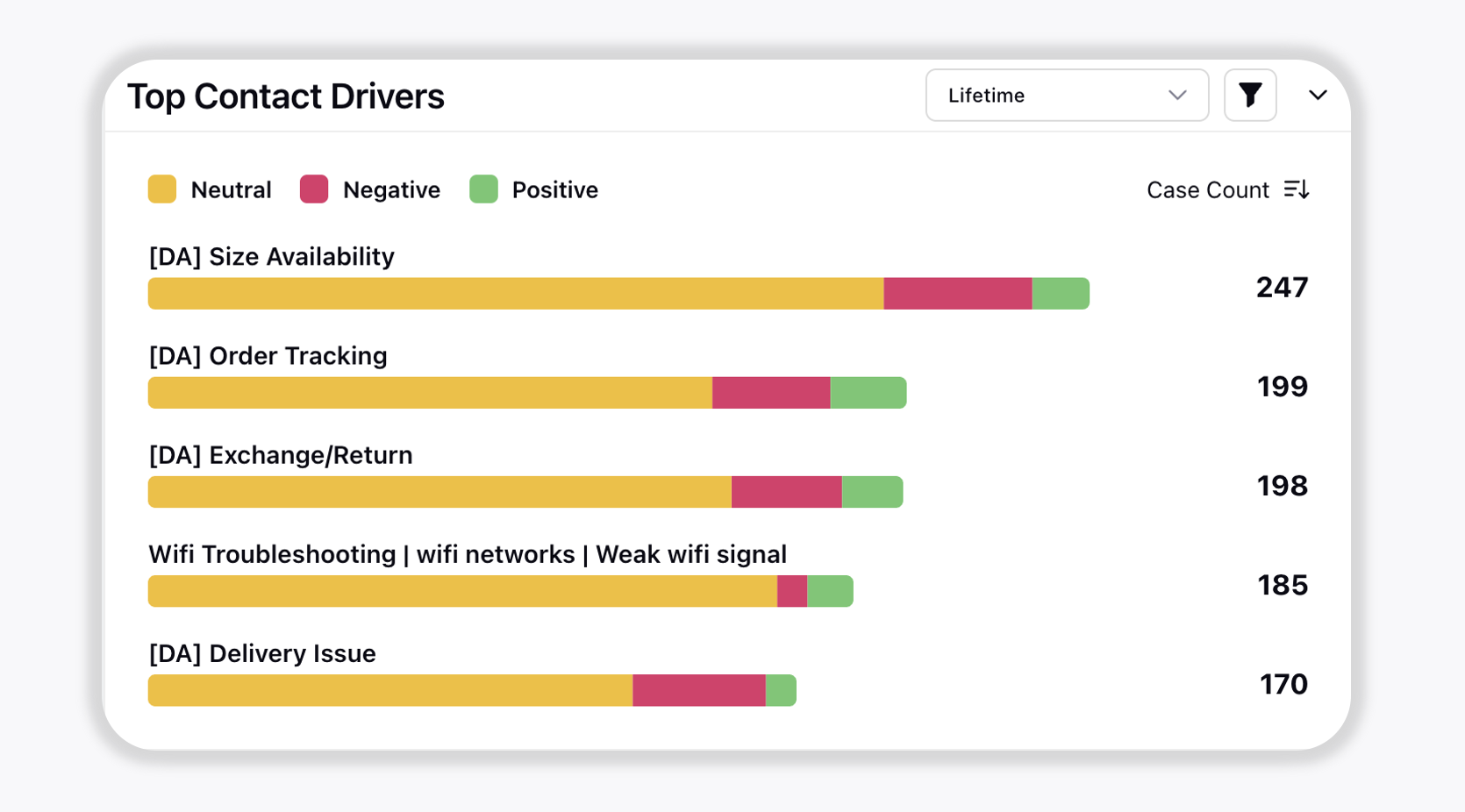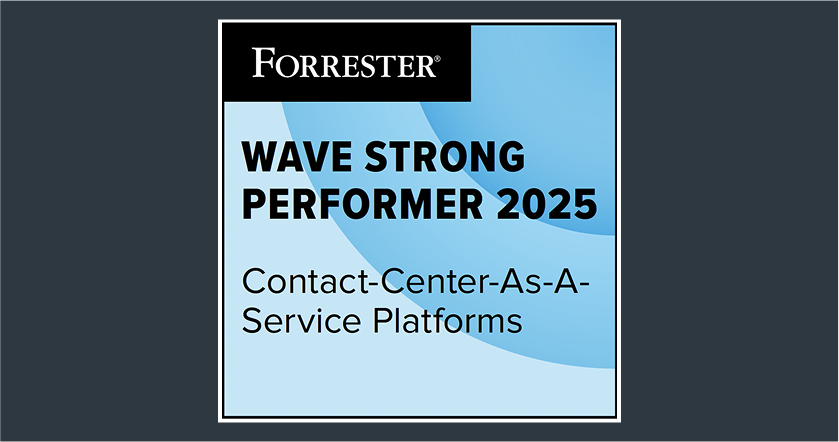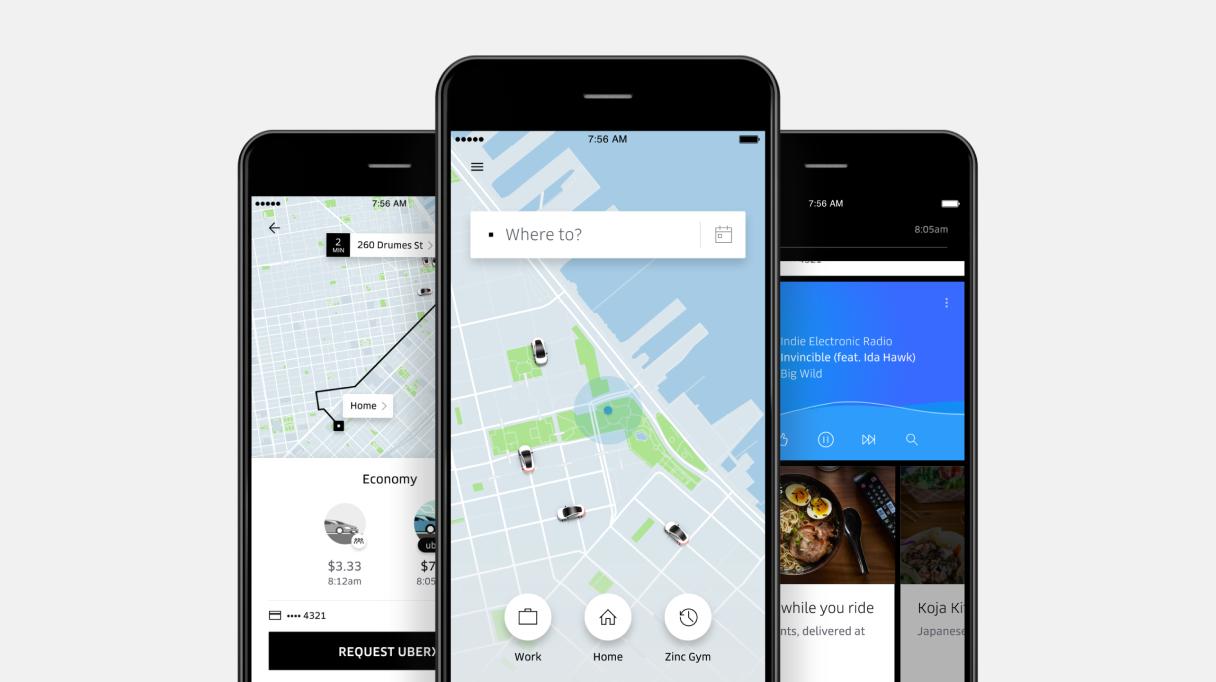- What is customer value?
- Why is customer value important in customer service?
- How is customer value created?
- 3 steps to measure customer value
- How is customer value calculated? [+Formula]
- 4 Types of customer value
- How to improve customer value for businesses: 11 easy ways
- How Hyatt built customer value by putting customer service at the forefront
What is customer value?
Customer value is the intricate balance between what a customer gains from a product or service versus what they invest in obtaining it. It is the net difference between benefits and costs associated with a product/service.
If a product or service delivers more value to a customer as compared to its cost, it’s perceived as “valuable” to the customer. In short, it is the customer’s perception of your product/service's worth.
Customer value varies from customer to customer. Though the pricing remains static for all customers, the benefits differ, the customer experience differs, which is why the net difference (or customer value) is different for different customers.
Why is customer value important in customer service?
Customer value is the secret sauce that transforms one-time buyers into loyal brand advocates, propelling businesses toward sustained growth and prosperity. Essentially, a brand that offers great value through its products and services is able to retain customers and encourage them to repeat purchases, thereby extending the customer lifetime value (CLV) In addition, the business is able to attract and acquire new customers and leads by positive word of mouth spread by loyal customers and advocates.
It goes beyond the initial transaction and takes into account the potential for repeat purchases, loyalty and positive word-of-mouth referrals.
How is customer value created?
Customer value is created through a combination of meeting customer needs and exceeding their expectations. This involves providing products or services that address specific pain points or desires while delivering superior quality, convenience or cost-effectiveness compared to alternatives. Also following it up with top-notch customer service. For instance, consider the smartphone industry.
Apple's iPhone creates customer value by offering cutting-edge technology and design. They go beyond and offer users a seamless ecosystem of apps and services that enhance user experience.
Samsung, on the other hand, provides budget-friendly Android phones by offering a wide range of features at a more accessible price.
In both cases, the key is aligning the product's attributes with what customers value most. Brands need to analyze what customers value in their products and services and what they are looking for. They need to look at who is on top in their niche and figure out their best practices. It, in turn, could be used as a guide for their value-creation process.
3 steps to measure customer value
It is easy to measure the cost of a product or a service, but it is hard to measure its perceived benefits because of the inherently subjective nature of these benefits. As they are based on individual experiences and preferences, what one values would differ significantly from another.
Also, it is dependent on the customer persona and on different stages of the customer journey. Due to these many reasons, here is a step-by-step process to measure customer value:
Step #1 - Use the customer value equation
Customer value is determined by the benefits your product provides, subtracted by the cost a customer has to incur in order to use the product optimally. Once you determine both quantities, measure it as follows.
Customer value = Benefits - Costs
When benefits exceed costs, positive customer value is created and the customer feels satisfied. Conversely, when costs exceed benefits, negative customer value is created and the customer will eventually start looking for alternative products that offer better benefits or lower costs.
Also read: What is Customer Effort Score (CES)
Step #2 - Quantify your perceived benefits
Figure out the primary reasons your customers like your product and why they decide to buy it. Analyze the following factors to get an overall perspective on the value you provide to your customer.
Use customer surveys to know what problems you are solving.
Use them to understand the ease of use and overall user experience.
Use metrics like CSAT and Net Promoter Score (NPS) to gauge the overall customer experience.
Use social listening to understand the overall brand perception.
Step #3 - Consider the cost
How much does your product or service cost the customer in terms of money and effort that goes into procurement, onboarding, maintenance and upgrade? Consider these factors to compute your cost:
Base price of the product/service
Cost of installation
Transportation costs
Maintenance costs
Opportunity cost of time spent in procurement and onboarding
Renewal expenses
How is customer value calculated? [+Formula]
As stated, the formula for customer value is:
Customer Value = Total Customer Benefits - Total Customer Costs
Since both benefits and costs are qualitative, assign different metrics to each benefit and cost. Then compare if the benefits outweigh the costs. Use customer journey mapping to segment customers, as every customer group will have varied benefits and costs as experiences are subjective.
4 Types of customer value
Customer value has four types:
Functional
Social
Monetary
Psychological
Let's delve deeper into the four types of customer value:
🤳 Functional value
Definition: Functional value refers to the tangible benefits and utility that a product or service provides to customers. It addresses the core purpose of the product in meeting customers' specific needs or solving their problems.
Examples: A washing machine's functional value is its capacity to clean clothes efficiently.
Measurement: To assess functional value, businesses often consider factors such as product performance, reliability, features and how well it fulfills customer requirements. Customer feedback, surveys, and product testing are common methods for evaluation.
👪 Social value
Definition: Social value considers the social or cultural significance of a product or service. It addresses how a product helps customers connect with others, express their identity or conform to social norms.
Examples: Luxury fashion brands offer social value by allowing customers to showcase their status and style.
Measurement: Measuring social value involves assessing how a product or service influences social interactions and can be evaluated through customer surveys, measuring social media engagement and observing customer behavior.
💰Monetary value
Definition: Monetary value focuses on the financial aspects of a product or service. It addresses the cost-effectiveness, affordability, and potential for cost savings that a customer perceives.
Examples: Discounted pricing, promotions, and loyalty programs are strategies to enhance monetary value.
Measurement: To measure monetary value, consider factors such as pricing, discounts, return on investment (ROI) and the perceived value relative to the price. Market research, pricing analysis and competitive benchmarking can provide insights into monetary value.
🤔Psychological value
Definition: Psychological value pertains to the emotional and psychological benefits that a product or service provides. It addresses how a product makes customers feel, their emotional connection to it, and the positive emotions it evokes.
Examples: Brands often aim to create emotional connections with customers. For instance, a brand associated with environmental sustainability may offer psychological value by making customers feel they are contributing to a better world.
Measurement: Businesses leverage methods like surveys, focus groups and sentiment analysis to gauge emotional responses and brand affinity.
All four types of customer value are crucial for businesses so that they can tailor their products, services and marketing strategies according to diverse customer needs and preferences.
Also Read: Your ultimate guide to building customer loyalty in 10 easy ways
How to improve customer value for businesses: 11 easy ways
Improving customer value is a strategic imperative for businesses looking to foster long-term customer loyalty and sustainable growth. Here are key strategies to enhance customer value:
1. Focus on customer success
Don’t just be reactive, be proactive. Have dedicated customer success managers to help your customers as they elevate themselves from being sales prospects to active users. Rather than solving problems when they come up, customer success managers leverage customer data to address any shortcomings proactively before they become complaints.
Did you know: Customer success vs. customer experience: What’s the difference?
2. Understand your customers
Develop a deep understanding of your target audience through market research, surveys and data analytics. Identify their needs, preferences, pain points and buying behaviors. Identify the various stages and touchpoints in a customer's interaction with the product or service. Pinpoint customer needs, pain points and challenges at each stage of the journey.
3. Gather customer information
Leverage CRM tools to store customer data, such as purchase history, preferences and behavior. Use this information to draft personalized product recommendations, special offers and content that cater to individual customer needs and interests.
Also Read: What is contact center CRM?
4. Segment your customer base
Segment your customer base based on demographics, behavior and preferences. This allows for personalized marketing, product development and communication tailored to each segment.
5. Enhance product quality and innovation
Continuously improve your products or services to meet or exceed customer expectations. Innovate to stay ahead of the competition and address emerging customer needs.

6. Pricing strategies
Implement pricing strategies that offer value for money, such as tiered pricing, subscription models and bundling. Ensure that your pricing aligns with the perceived value of your offerings.
7. Loyalty programs
Create loyalty programs that reward frequent customers with discounts, exclusive offers or points that can be redeemed for future purchases.
8. Personalize the support experience
Personalized support helps customer support agents recommend solutions, products or services. For instance, suggesting a specific feature or upgrade that aligns with the customer's history and preferences can increase the perceived value of the product or service. Likewise, scheduling support calls during your customer’s preferred time slots will also be a value-add.
9. Build a community
Make your customer feel wanted. Elevate transactions to great conversations and life-changing experiences. Create a community where buyers can share their experiences, guide each other, ask questions and seek support.
💡Sprinklr Pro Tip: Find a community forum solution that helps you build & manage a customizable community to deliver proactive service, foster connections and upsell rigorously to your existing customers.
Now, let’s take a look at a real-world example of a brand building great value for its customers in a strategic way.
How Hyatt built customer value by putting customer service at the forefront
Hyatt Hotels & Resorts is an American multinational hospitality company. Customer care is at the heart of Hyatt’s business — for both its customers and its employees.
They wanted a digital solution that would enable associates in Hyatt’s contact center to deftly handle increased customer queries while maintaining the premium care customers have come to expect. A solution that could help them to:
Meet customers on the channels they prefer
Treat each customer uniquely, with case history at their fingertips
Engage with customers on their terms
The solution?
Sprinklr Service. The AI-powered customer-first platform allowed Hyatt to customize its crisis listening capabilities. Teams were able to effectively track trends related to concerns around traveling and manage conversations with customers regarding reservation changes.
The minute a guest connects with the contact center, Hyatt agents pull up information to fully understand the individual and the context of their case to deliver the best care possible.
The result?
Hyatt has more than 700 employees distributed around the globe, working from the Sprinklr platform to engage with local customers. Hyatt’s customer service team now responds to inbound queries from customers 34% faster than it did prior to implementation.
If you want to build customer value just like Hyatt did, get your free demo of Sprinklr Service today.
Frequently Asked Questions
Customer value is the cumulative of all the benefits a customer gains from a product or service compared to its cost.
Customer satisfaction reflects the customer's contentment and how happy they are with their overall product or service experience.
It's a key indicator of how well a business meets or exceeds customer expectations, contributing to loyalty and retention.
related products
Thank you for contacting us.
A Sprinklr representative will be in touch with you shortly.
Contact us today, and we'll create a customized proposal that addresses your unique business needs.
Request a Demo
Welcome Back,
No need to fill out any forms — you're all set.







